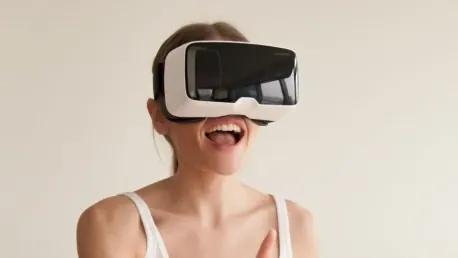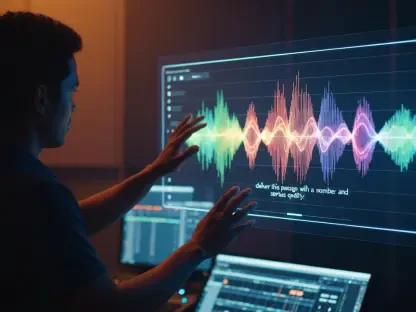The AR and VR market, once a beacon of technological innovation, has encountered unexpected turbulence in 2024. A significant decline in the global shipment of these devices raised concerns among industry watchers and stakeholders. Despite the gloomy forecasts, experts predict a strong rebound in the near future. This article will explore the reasons behind the current market slump and examine the factors that may drive its anticipated recovery.
The Decline in AR and VR Shipments
The global AR and VR device market witnessed a stark 28.1% year-over-year decline in the second quarter of 2024. IDC’s findings highlighted that only 1.1 million units were shipped during this period, a significant drop that has shaken the confidence of investors and consumers alike. This decline is not just a reflection of diminishing interest in these technologies but is deeply rooted in broader economic challenges.
Economic instability has induced cautious spending behaviors among consumers. Rising average selling prices for AR and VR headsets further compounded the issue, making these advanced gadgets less attainable for a broader audience. The excess inventory from the first quarter also contributed to manufacturers scaling back new shipments, thereby stagnating market progress during the second quarter.
Underlying Economic and Market Conditions
The economic downturn has undeniably influenced the AR and VR market negatively. Across the globe, economies teetered on the edge of recession, prompting cautious consumer behavior. High inflation rates led to increased production costs, which manufacturers passed on to consumers, resulting in higher average selling prices. This chain reaction significantly curtailed demand for pricey AR and VR gadgets.
Meanwhile, excess inventory from early 2024 led to a cautious approach from manufacturers. Companies were hesitant to flood the market with new products when unsold stock remained, a tactic to avoid severe financial losses. Despite some alleviation of these economic pressures in the latter half of the year, the impact has been deeply felt, setting the stage for a tighter market in the short term.
The Promising Outlook for 2025
Despite the downturn, industry experts foresee a promising future. IDC projects a substantial market growth recovery in 2025, estimating a 41.4% increase in shipments. This optimistic outlook is fueled by several key factors, including the anticipated introduction of more affordable AR and VR headsets and expedited technological advancements.
Manufacturers are expected to launch budget-friendly models to broaden their consumer base. This strategy aims to tackle one of the most significant barriers to adoption: cost. Furthermore, the debut of new, feature-rich products by industry giants promises to reignite consumer interest and drive sales. The integration of augmented AI features and user-centric designs in new models will likely play a pivotal role in revamping market dynamics.
Market Leadership and Competitive Landscape
Meta Platforms plays a crucial role in steering the AR and VR market, holding a commanding 60.5% market share. Meta’s leadership is powered by its innovative product line and pricing strategies that aim to make high-quality AR and VR experiences accessible to a larger demographic. Their planned introduction of more budget-friendly models is expected to be a game-changer.
Other significant market players include Sony, Apple, ByteDance, and Xreal Technology. Each of these companies is bringing its unique strengths to the table, with Sony’s strong foothold in gaming, Apple’s potential AR-enhanced devices pending launch, and innovative solutions from ByteDance and Xreal. Collectively, these companies create a competitive landscape poised for rapid evolution and growth.
The Evolution of Mixed Reality Headsets
Recent advancements in Mixed Reality (MR) headsets have garnered significant attention. Devices like the Quest 3 and Vision Pro exemplify the strides made in combining AR and VR into cohesive MR experiences. These innovations have not only expanded the possibilities of what headsets can do but also heightened consumer expectations.
Mixed Reality’s potential lies in its ability to provide immersive experiences that blend the real world with digital enhancements. For example, the Quest 3 is celebrated for its intuitive user interfaces and seamless integration of virtual elements into everyday life. The Vision Pro, similarly, prides itself on providing high-fidelity visuals and responsive interactions. The advances in MR indicate a move toward more sophisticated and commercially viable products that could reignite the AR and VR market.
Technological Innovations and Affordability
One of the main hurdles to widespread AR and VR adoption has been affordability. However, technological advancements are promising to bring down costs while enhancing functionality. The integration of AI-driven features and more consumer-friendly designs are leading this charge. For instance, reduced manufacturing costs for AI components and streamlined product designs are allowing companies to offer high-quality experiences at lower prices.
Moreover, established players in AR, such as HoloLens, are expected to introduce more cost-effective Mixed Reality devices. These developments are crucial in making advanced technology accessible to a broader audience, thereby facilitating market growth. By investing in research and development, these companies aim to offer innovative yet affordable solutions that will attract a diverse customer base.
Long-Term Growth Potential
The AR and VR market, once a symbol of technological advancement, has encountered unexpected challenges in 2024, leading to a notable decline in global shipments of these devices. This downturn has raised concerns among industry experts and stakeholders. Various factors have contributed to this market slump, including supply chain disruptions, shifts in consumer spending, and the lingering effects of the global pandemic. However, there’s still optimism within the industry. Experts are forecasting a robust recovery in the near future, anticipating that advancements in technology, new applications, and increasing consumer interest will reignite growth. The potential for AR and VR to revolutionize sectors like gaming, healthcare, education, and remote work remains a driving force behind this optimism. This article will delve into the reasons for the current decline and explore the elements that could fuel the anticipated resurgence, providing a comprehensive look at the dynamics shaping the future of AR and VR technology.









